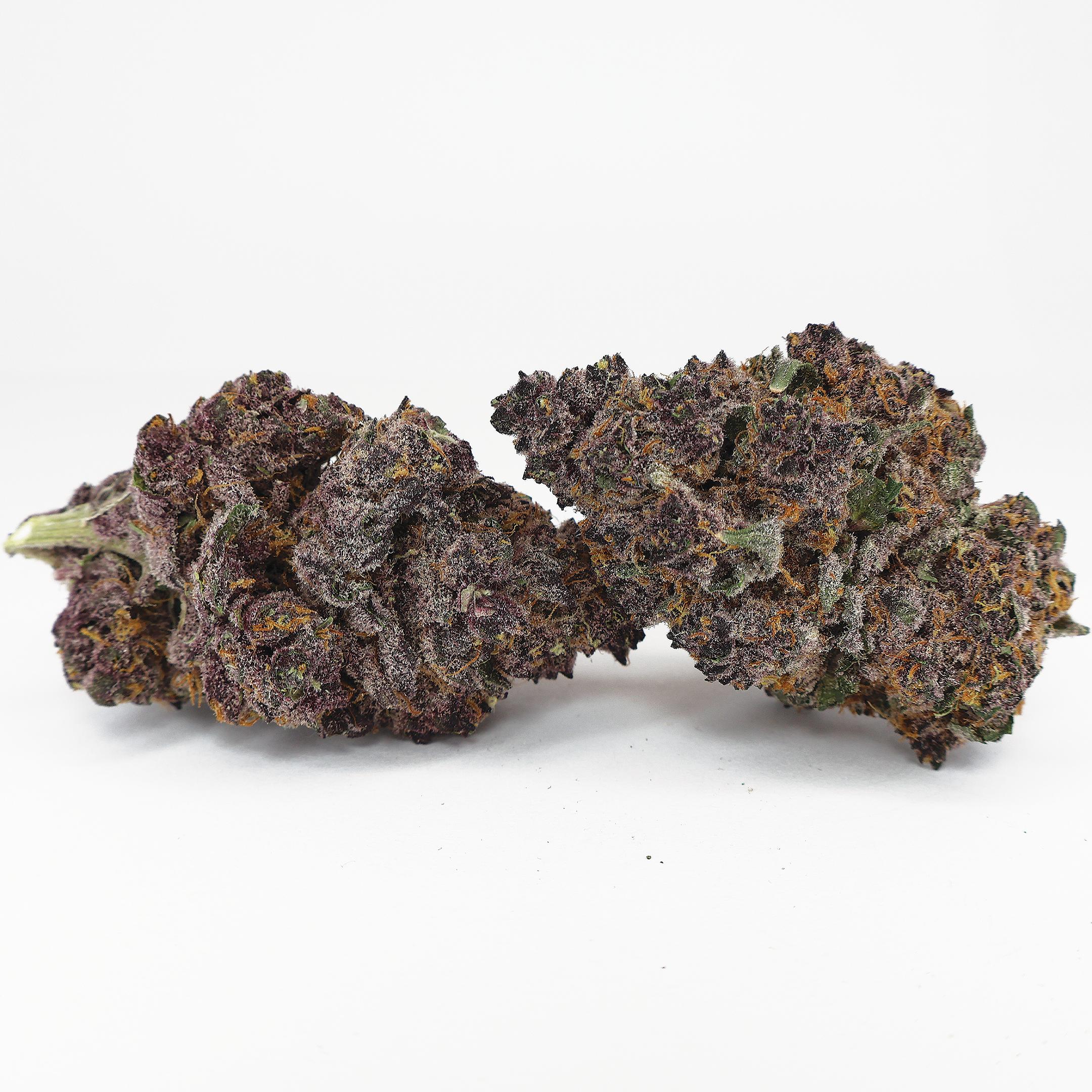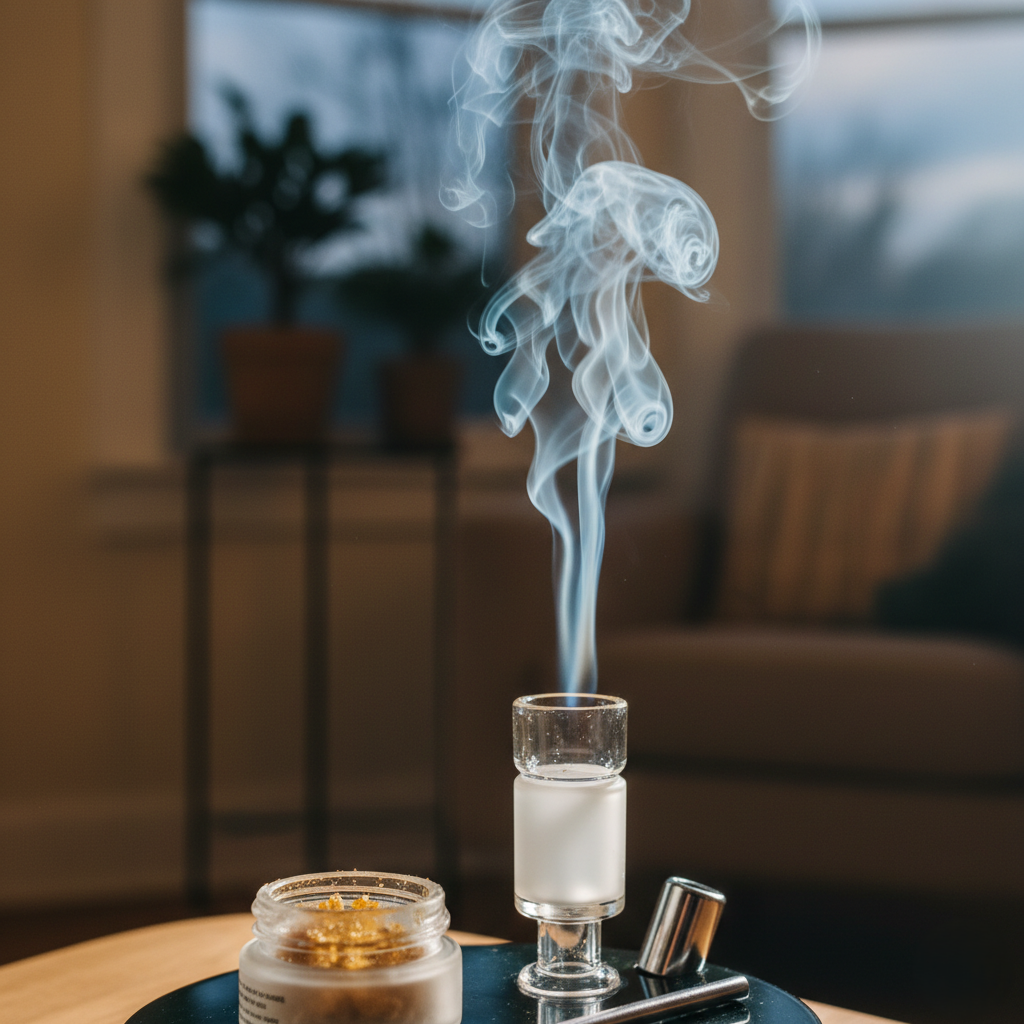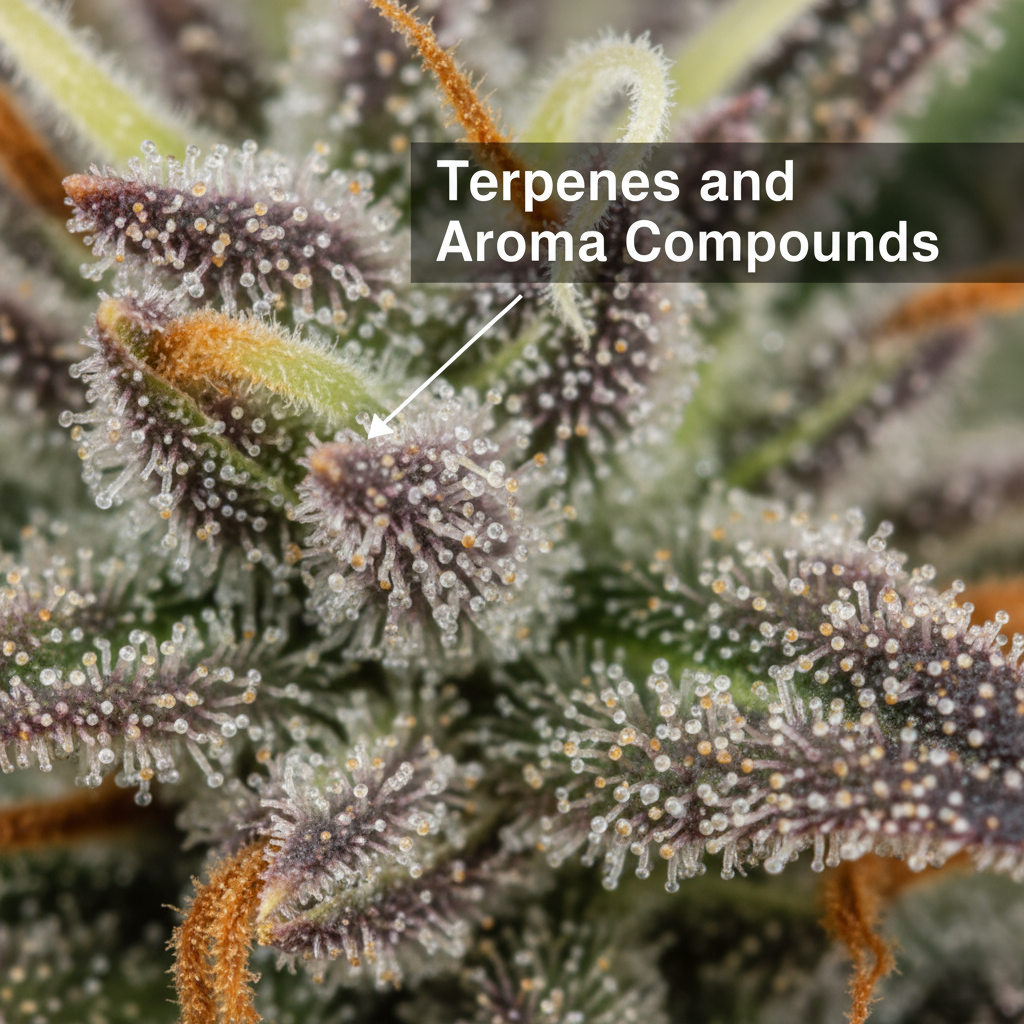
Rosin concentrates have skyrocketed in popularity among cannabis enthusiasts due to their solventless extraction process, potent cannabinoid profiles, and clean flavor. Unlike other concentrates that require solvents such as butane or propane, rosin is made by applying heat and pressure to cannabis flower, kief, or hash to extract a sticky, resinous substance rich in cannabinoids and terpenes. However, with potency often exceeding 70–80% THC, rosin concentrates deliver powerful effects that can be overwhelming for inexperienced users. Understanding these effects and learning how to use rosin safely ensures a more enjoyable, controlled experience. This article explores the top five effects of rosin concentrates and provides practical tips for responsible consumption.
1. Intense Euphoria and Relaxation
1.1 Why Rosin Produces a Strong “High”
Rosin concentrates are prized for their high THC content, which typically ranges between 65–85% THC, depending on the starting material and pressing technique. By stripping away most plant matter and retaining cannabinoids and terpenes, rosin offers a purer, more potent form of THC. When inhaled, THC quickly binds to CB1 receptors in the endocannabinoid system, triggering a cascade of neurotransmitter release (dopamine, serotonin) that produces euphoria, uplifted mood, and deep relaxation. Terpenes like myrcene, limonene, and linalool also contribute to the effect by modulating THC’s psychoactivity and adding complementary therapeutic benefits (e.g., stress relief, mood enhancement).
1.2 Potential Risks of Overconsumption
Because of its potency, even a small dab of rosin (0.05–0.1 grams) can deliver a powerful psychoactive effect. Overconsumption may lead to common adverse reactions such as increased heart rate (tachycardia), dry mouth (cottonmouth), red eyes, or impaired motor coordination. In beginners, large doses can precipitate anxiety, paranoia, or panic attacks. Symptoms typically subside within 30–90 minutes, but can feel overwhelming in the moment.
1.3 Safe Usage Tips
-
Start Low, Go Slow: Novice users should begin with a “microdose” (~1–2 mg THC). Use a digital scale with 0.01-gram precision to measure small amounts of rosin.
-
Use a Temperature-Controlled Dab Rig or Vape: Ideal temperature ranges between 350–450°F (175–230°C) for balanced terpene preservation and smooth vapor. Lower temperatures (350–380°F) emphasize flavor and a milder high; higher temperatures (380–450°F) increase potency and onset speed but risk harshness.
-
Take Breaks Between Hits: Wait 5–10 minutes between inhalations to gauge the effect before consuming more. This prevents accidental overconsumption.

2. Enhanced Pain Relief and Anti-Inflammatory Benefits
2.1 The Role of Cannabinoids and Terpenes
Rosin concentrates deliver not only THC but also other cannabinoids like CBD, CBG, and minor cannabinoids (CBC, THCV) if the starting material contains them. These cannabinoids possess anti-inflammatory and analgesic properties. Combined with terpenes such as beta-caryophyllene (a CB2-agonist with anti-inflammatory effects) and myrcene (a muscle relaxant), rosin can provide robust pain relief for conditions like arthritis, migraines, and muscle spasms.
2.2 Onset and Duration of Effects
When vaporized, rosin’s effects on pain relief can begin within minutes, peaking around 20–30 minutes, and tapering off over 2–4 hours. Unlike oral edibles (which take 45–120 minutes to onset), vaporized rosin allows for rapid titration, users can stop once they reach sufficient relief.
2.3 Best Practices for Medicinal Users
-
Consult a Healthcare Provider: If you’re managing chronic pain or on prescription medications, discuss rosin use with a medical professional to avoid drug interactions.
-
Track Dosage and Effects: Keep a journal noting how much rosin you consume, the method (dab, vape, drip), and the resulting level of pain relief. This helps identify optimal dosage and minimize tolerance buildup.
-
Integrate with Other Therapies: Use rosin as part of a broader pain management plan, incorporate physical therapy, stretching, or heat/ice therapy for best results.
3. Heightened Creativity and Focus
3.1 Cognitive Effects of Terpenes and Minor Cannabinoids
Certain rosin profiles, especially those high in limonene (citrus aroma) or pinene (pine aroma), can impart an energizing, uplifting boost that enhances creativity, focus, and mental clarity. Limonene interacts with serotonin and dopamine receptors, elevating mood and motivation. Pinene has bronchodilator properties that can improve alertness. Additionally, small amounts of THCV may promote mental clarity without the sedative effects of pure THC. When combined, these compounds produce a balanced “head high” conducive to brainstorming, artistic work, or problem-solving.
3.2 Ideal Strain Types for Creativity
-
Sativa-Dominant Rosins: Derived from sativa strains like Jack Herer, Durban Poison, or Sour Diesel, these rosin concentrates typically contain terpenes (limonene, terpinolene) that boost energy and focus.
-
Hybrid Rosins: Balanced hybrid rosin from strains like Blue Dream or Super Lemon Haze can offer creativity plus mild relaxation, ideal for afternoon or early-evening use without feeling overly sedated.
3.3 Safe Usage Tips
-
Use in a Controlled Environment: If you’re experimenting with high-THC, high-terpene rosin for creativity, start with a single, small inhalation and test your response before tackling tasks requiring complex cognitive function.
-
Avoid Operating Heavy Machinery: Even if you experience creativity, your reaction time and judgment may be impaired. Schedule sessions when you don’t need to drive or handle dangerous equipment.
-
Hydrate and Snack: Replenish fluids and glucose; stimulant-like effects may suppress appetite or cause dry mouth; keep water and healthy snacks (fruit, nuts) on hand.
4. Improved Sleep Quality and Sedation
4.1 Indica-Dominant Rosins for Rest
Indica-leaning rosin concentrates, often from strains like Granddaddy Purple, Northern Lights, or Purple Kush, contain high levels of myrcene and linalool. Myrcene is a potent sedative terpenoid that can reduce anxiety and promote muscle relaxation. Linalool offers anxiolytic effects and can ease nervous tension. Combined with THC’s sedative properties at higher doses, rosin can facilitate faster sleep onset, reduce nighttime awakenings, and promote deeper, more restful sleep cycles.
4.2 Timing and Dosing for Sleep
-
Nighttime Use Only: Reserve indica rosin for late evening (1–2 hours before bedtime). The strong sedative effect can last 4–6 hours, so plan accordingly to avoid morning grogginess.
-
Moderate Dose: 2–5 mg of THC-dominant rosin is often sufficient for a sleep aid. Too high a dose may cause “hangover” effects or excessive grogginess.
-
Combine with Sleep Hygiene: Pair rosin use with a consistent bedtime routine, dim lights, avoid screens 30 minutes before bed, and ensure your sleep environment is cool, dark, and quiet.
4.3 Caution for Tolerance and Dependence
-
Rotate Strains: Use rosin intermittently (3–4 times per week maximum) to prevent tolerance. Alternating with CBD-dominant products or low-THC indica flower can maintain efficacy.
-
Monitor Tolerance: If you notice larger doses needed to achieve the same sleep effect, consider taking a break (2–3 days) to reset your endocannabinoid system.
5. Enhanced Appetite (The “Munchies”)
5.1 Why Rosin Stimulates Hunger
THC binds to CB1 receptors in the hypothalamus and other brain regions that regulate appetite. Rosin’s high THC concentration amplifies this effect, often triggering a pronounced increase in appetite (commonly known as “the munchies”). Terpenes like ocimene and humulene may further stimulate hunger by modulating metabolic pathways and digestive enzyme release.
5.2 Benefits for Medical Patients
-
Chemo-Induced Nausea and Cachexia: Patients undergoing chemotherapy or suffering from appetite loss due to illness can benefit from rosin’s appetite-stimulating effects to maintain a healthy weight and nutritional status.
-
HIV/AIDS-Related Weight Loss: Similarly, users with HIV/AIDS-related cachexia may find rosin helpful for reversing weight loss by encouraging calorie intake.
5.3 Responsible Consumption Tips
-
Choose Nutritious Snacks: When the munchies hit, opt for balanced snacks, nuts, yogurt, fruit, or whole-grain crackers instead of high-sugar or ultra-processed foods.
-
Stay Hydrated: Sometimes thirst mimics hunger; keep water nearby to avoid overeating.
-
Be Mindful of Calories: While increased appetite can be therapeutic, be cautious if you’re prone to weight gain or managing diabetes.
-
Avoid Impulse Purchases: If you know rosin makes you crave junk food, prepare healthy snacks ahead of time so you’re not caught without alternatives.
How to Use Rosin Safely: Practical Guidelines
Whether you’re seeking euphoria, pain relief, creativity, sleep, or appetite stimulation, following safety best practices ensures a positive rosin experience.

-
Invest in Quality Equipment
-
Temperature-Controlled E-Nail or Dab Rig: Precise temperature control preserves terpenes and prevents combustion byproducts.
-
Quartz, Ceramic, or Titanium Nail: Choose materials that heat evenly and maintain stable heat levels.
-
High-Quality Torch or Electric Nail: A torch with a micro-adjustable flame or an electric nail with a digital temperature readout allows consistent heating.
-
Proper Loading Tools: Use a glass or stainless-steel dabber to transfer rosin onto the nail, avoid plastic, which can melt.
-
-
Practice Proper Hygiene
-
Clean Equipment After Each Use: Rosin residue builds up quickly; clean your nail with isopropyl alcohol and Q-tips after each session to maintain flavor and prevent bacterial growth.
-
Wash Hands: Oils and dirt on your hands can contaminate rosin; handle concentrates with clean tools and hands.
-
-
Store Rosin Correctly
-
Cool, Dark, Airtight Containers: Store rosin in silicone or parchment-lined jars inside an airtight container.
-
Refrigerate for Long-Term Storage: Exposure to heat and light degrades terpenes and cannabinoids; storing rosin in a refrigerator or cool pantry extends shelf life.
-
-
Know Your Tolerance and Avoid Mixing Substances
-
Avoid Alcohol or Other Depressants Simultaneously: Combining rosin with alcohol or sedatives can amplify impairment and increase risk of adverse effects.
-
Start with Lower THC Concentrations: Beginners should seek rosin made from high-CBD or balanced hybrid strains to moderate the psychoactive impact.
-
-
Mind the Environment
-
Safe, Comfortable Setting: Use rosin in a calm, familiar environment—avoid dabbing in public or while caring for children or operating machinery.
-
Ventilation: Ensure your space is well ventilated to mitigate lingering odor and prevent excessive inhalation of vapor.
-
-
Be Aware of Legal and Regulatory Factors
-
Know Local Laws: Rosin legality varies by jurisdiction; some regions limit concentrates even if flower is legal. Stay informed to avoid legal repercussions.
-
Age Restrictions: Only individuals above the legal age (typically 21+) should use concentrates.
-
Purchase from Licensed Dispensaries: To ensure safety and accurate potency labeling, buy rosin from reputable, licensed cannabis retailers.
-
Conclusion
Rosin concentrates offer a clean, solventless option with potent therapeutic and recreational benefits. From intense euphoria to enhanced pain relief, creativity, improved sleep, and appetite stimulation, rosin delivers powerful effects driven by its high THC content and diverse terpene profile. However, to maximize benefits and minimize risks, such as overconsumption, increased tolerance, and negative side effects, users must follow safe consumption practices: start with low doses, use temperature-controlled equipment, maintain hygiene, and be mindful of their environment and legal obligations. By respecting the potency of rosin and consuming responsibly, both medicinal and recreational users can enjoy a safer, more satisfying experience.






Share:
Discover Jungle Lava Live Hash Rosin: Premium THCa Concentrate for a Full-Spectrum Experience
Discover the Sweet Power of Hood Candyz THCA Flower